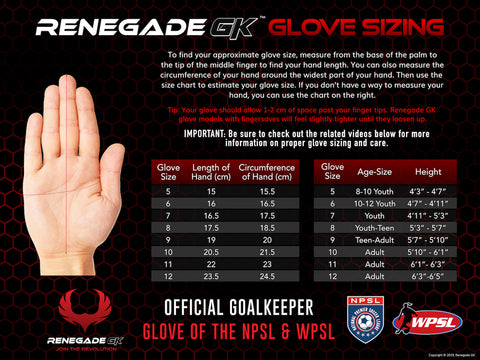
One of the fatal mistakes of any young keeper as they develop is the mastery of critical technique around catching a ball. For some young keepers they just have it natural, for others, it is certainly easily learned with practice. For all of us, we must remember the technique in not only how we catch a ball but more importantly with what part of our hands we attempt to control a shot.
When catching a ball we always seek to catch first, or lead, with our fingertips. The mere sound of a keeper catching a ball with their fingertips is a stark contrast to a keeper who leads with their palms. When working on simple catching drills all you need to do is keep your ears open when catching a ball. The loud slapping noise you hear means that you are catching the ball primarily with the palms. As you age up or hit higher developmental levels this technique will likely begin to fail you as the speed of play increases.
Yet, if you are catching with the fingertips you should seek to get to a place of near silence in the catching technique. A keeper using their fingertips to catch a ball is about as sweet of a sound as there is on the pitch. Catching with the fingertips is all about complete control and with practice should be something worth developing.
2. Use Your VOICE

One of the most critical aspects of any soccer player is their voice. Though, we may argue that as keepers it is essential to not only your success in goal but also your ability to progress developmentally throughout your career. In other , osts we will dive deeper into the key points of communication in net but we will highlight a few here.
As keepers we are the quarterbacks of our squad, we see the entire pitch from the most comprehensive perspective. Your ability to appropriately organize and instruct the men or women in front of you will be the difference between winning and losing, picking a ball up for a goal kick or picking it up out of the net. Here are a few keys to communicating as a keeper:
- Be Clear: Reinforce your demands in every training session so your players are ready during match play
- Be Concise: Simple communication and the use of single words where applicable is best. While others are making active decisions, a player cannot decode complicated instructions in the moment. Simple, concise communication always results in better understanding between a keeper and his mates.
- Be Demanding: Now there are many words that describe keepers but the last one you want beside your name in the locker room is NICE. Let’s face it, soccer is an emotional game full of controlled chaos. Instead of asking politely in the 90th minute it may be better to take a more direct approach. Remember, you’re the quarterback, you call the plays!
3. Sound Footwork

The hidden gem of great goalkeepers lies in their ability to navigate their area. In nearly every training session across the globe keepers are indirectly working on their footwork. Learning the technique around moving from point A to point B in between your posts will determine the extent of your career. A step wrong and you’re too slow to react. A step left instead of right, your balance is off, and the save unlikely.
Remember, when working on even the simplest of drills to the most complex tactical creations of your coaches, sound footwork will be what makes or breaks your ability to consistently stop shots. We always encourage our keepers to emphasize speed and agility movements in the off-season as this is one way to really increase your balance and mobility. As keepers we must remain agile enough to make split second decision that hurl our bodies across the 6-yard box at a moments notice. Proper footwork will always give you the best chance at making the save. Footwork is the difference between raising the trophy or packing it up for the off-season without silverware.
4. Protect yourself

Technique, technique, technique, we can’t say it enough! One of the best ways to ensure your survival and longevity in this position is in how you protect yourself as a keeper. Now there are many factors that go into protecting your body all the way down to nutrition. Here we’re talking technique while making saves. In other posts we will breakdown some of these scenarios, but to address a critical one for keepers of all ages is the high ball.
We’ve all seen it on TV or even out on the fields, a keeper rises up for a cross and gets clattered into by an unaware striker or even worse unaware teammate. There are two ways this usually ends for the one wearing gloves, pain or pride. When going up for a high ball it is critical that you protect yourself with your knee. As we train keepers of all ages we encourage them first to get used to getting at least one knee up to protect themselves. As keeper’s progress though we can actually break it down even further. For our more advanced keepers we want you to raise the knee closest to an incoming impact.
Let us be clear, we do acknowledge and recognize that this isn’t always going to make the situation more fun when surrounded by 6 players fighting to put their head, chest, body on a crossed ball in the last minute of a game. BUT, we will say that if you can manage to get a knee up you at least stand a much better chance of walking away with more pride, less pain, and the ball in your arms!
5. Awareness

One of the more advanced aspects of goalkeeping comes in a player’s ability to be aware of their surroundings at all times. This can be as complex as the tactical scenarios they or their teammates are facing, the location of opponents on a corner kick, setting up a wall to defend a free kick, and even distribution when countering. No matter what the situation a keeper’s awareness can make or break their decision making. Keep your head on a swivel, see the entire pitch, and to make your life even easier, communicate what you see to others on your team. As the quarterback of the field you have the distinct advantage of perspective, never forget the fact that keepers can see the entire pitch and therefore should use this to their advantage when instructing the players in front of you!









